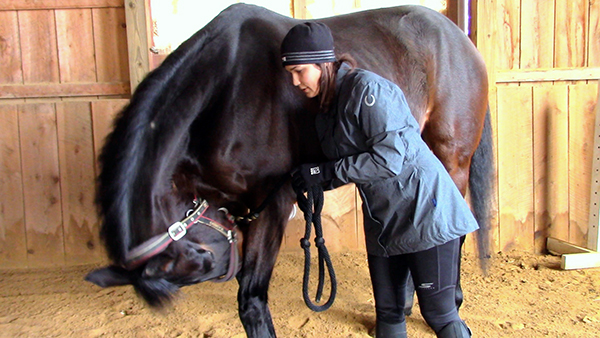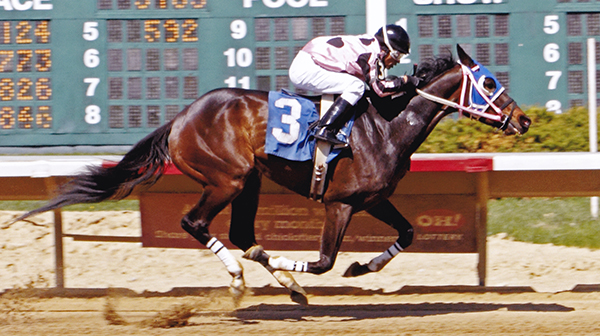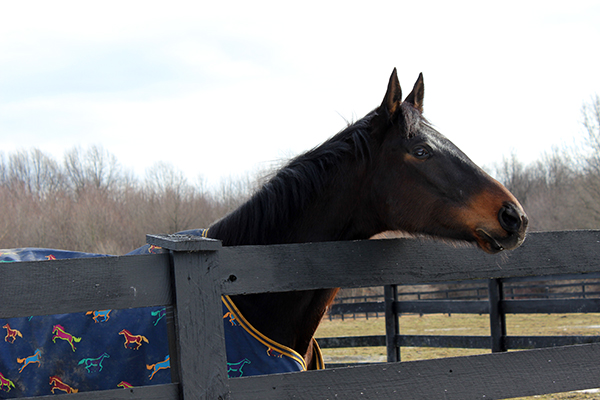Find Out How Massage Can Benefit Your Ex-Racehorse
Many horses have issues with balance, straightness or restricted range of motion, especially off-the-track-thoroughbreds. Issues like stiffness, poor flexibility, high head carriage, wrong leads, difficulty circling, weak hind end, heavy on the forehand or a limited ability for collection.

Even though a horse’s natural balance is more on the forehand, this can become exaggerated when more weight is placed toward the front of the horse. This is compromised even more when the hind end is weak. Developing strength in the rear of the horse is essential as it is responsible for the propulsion of the horse. It is also equally important to strengthen the deep core muscles of the horse’s neck to aid in the elevation at the base of the neck and for flexion at the poll.
Maybe your ex-racehorse can’t maintain a consistent frame or perhaps they aren’t responsive to your aids the way you’d prefer. Guess what? These are fairly common issues and they won’t resolve on their own, even with a horse that’s sound.
In order to achieve true collection, more engagement from the hind end is required in the form of stepping farther underneath the body. This propulsion from the hindquarters allows the horse to be “lighter” on the forehand and also aids in the elevation of the neck and flexion at the poll.

Like people, horses have a preferred laterality. Either left or right side dominant. The hollow or weak side is the area where muscles will require more development. In hand work, groundwork and gymnastics are a vital tool to help develop balance and even out the natural asymmetry in the horse.
However, you can not “train out” muscle tension, tightness and restriction. If the repeated strain of improper muscle use isn’t alleviated, it can result in issues with the equine’s range of motion. By limiting or restricting the free movement of the muscles, a visible problem is sure to arise within the horse. This is often observed in off-the-track-thoroughbreds or horses that have a “funny way” of going. Discomfort from muscle tightness can also manifest as a sour disposition in a horse’s behavior with an aversion to work or being ridden under saddle. Many horses suffer in silence with pain or discomfort due to muscle restriction and it only becomes known when the horse has reached a “breaking point.”
The equine’s body is composed of over 60% muscle. If you have a desire for your horse to be flexible, supple and have an overall sense of well-being––massage, core exercises and therapeutic stretches are essential to improving range of motion.
In fact, science has proven that massage can increase the range of motion. Increased range of motion means greater flexibility, stamina and more fluidity in movement.
Once problem areas are addressed, the horse can move more freely. Keeping the horse flexible can also help prevent injuries by reducing the muscle tension or constriction due to repetitive strain–which is caused by the improper use of muscles.

Massage also increases the circulation in the horse to help promote faster healing or rehabilitation time, as it helps generate the required blood flow to the muscles.
Regularly implementing core exercises that target and activate the deep core muscles in addition to massage can vastly improve your horse’s posture and stability while increasing their range of motion.
Equine massage, core exercises, stretches or other physical conditioning exercises are never a substitute for veterinary care. It can improve the quality of life, general well-being, and performance of a horse. If your horse is experiencing lameness or illness, please consult your veterinarian.
About the author: Raina Marie Paucar Is a Certified Equine Massage Therapist Specializing in Sports Massage and Biomechanics for the Equine Athlete. She has over 20+ years of professional field experience with racehorses on and off-the-track as well as performance horses. She is dedicated to educating and promoting the well-being of all horses with a special focus on ex-racehorses. You can visit her website: ottbacademy.com, Instagram @ottbacademy, or on Facebook at @ottbacademy. Learn how to further develop your horse with Three Essential Exercises on her website.




